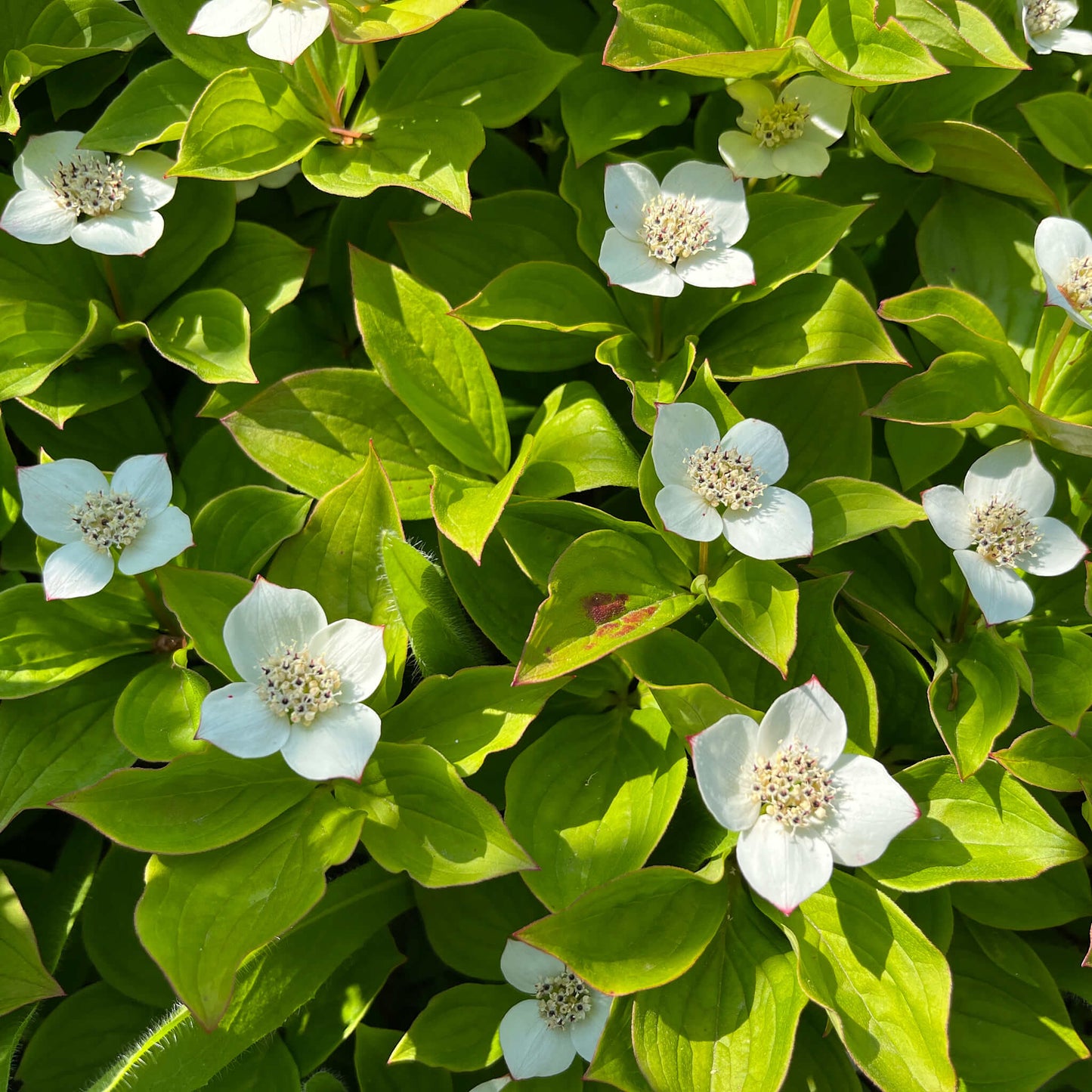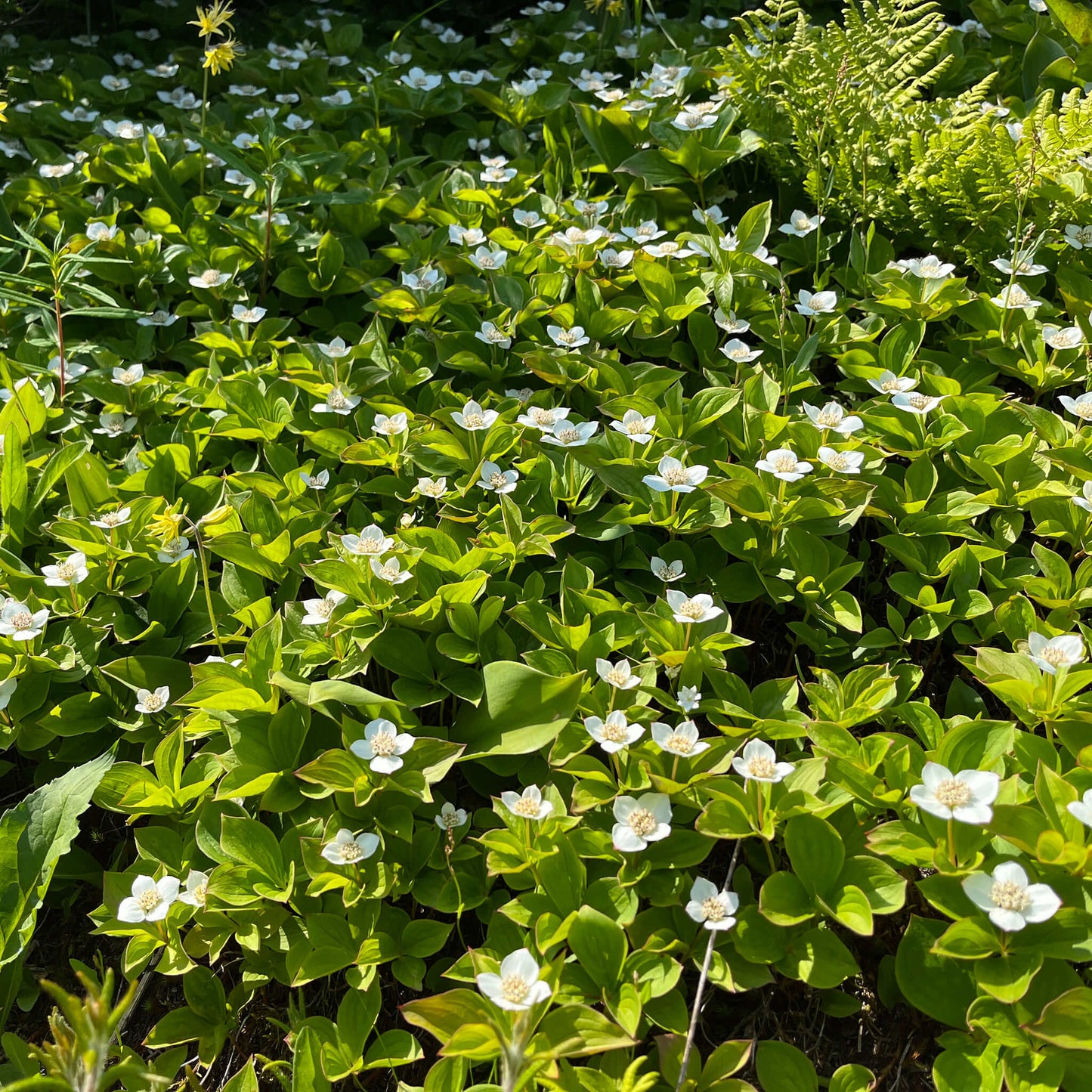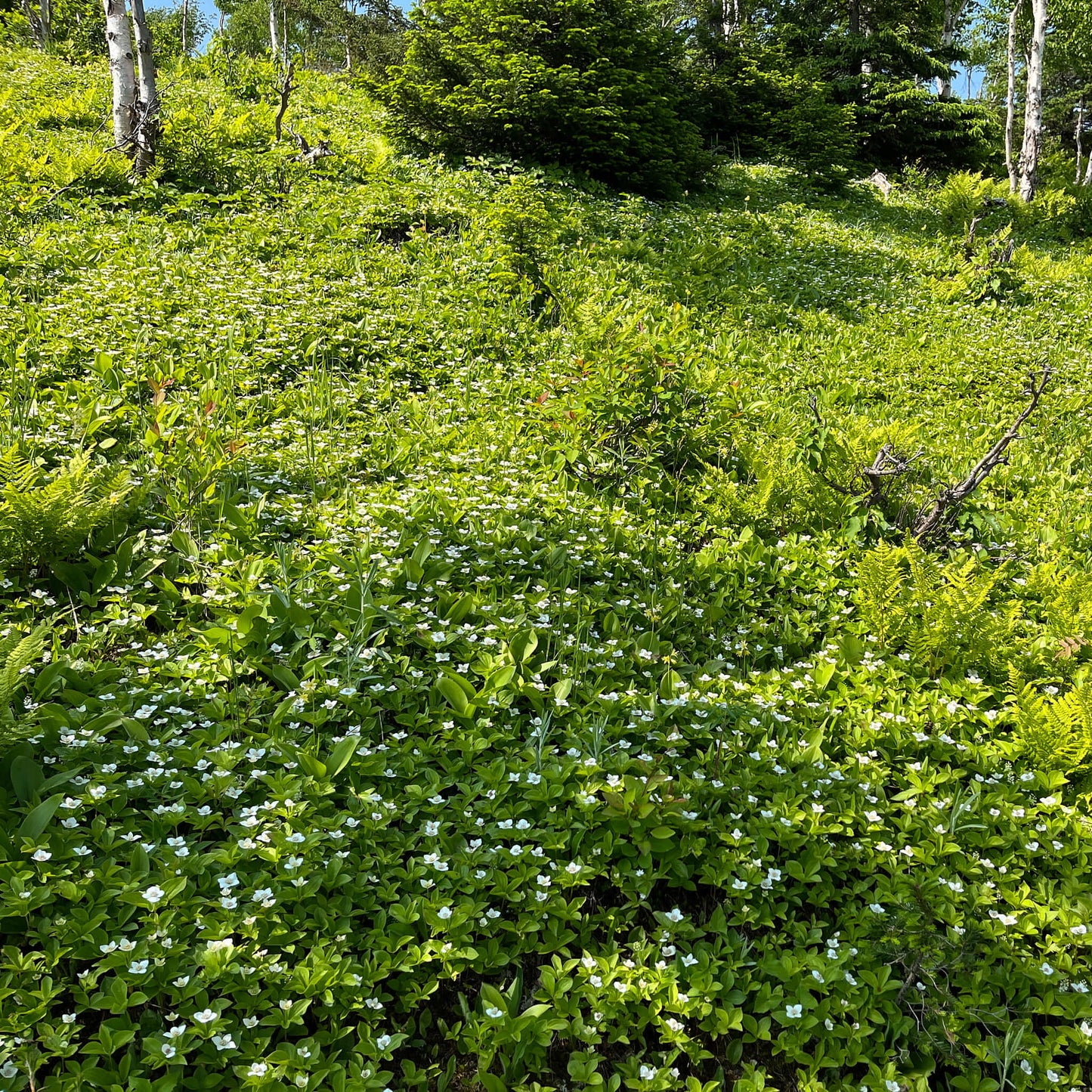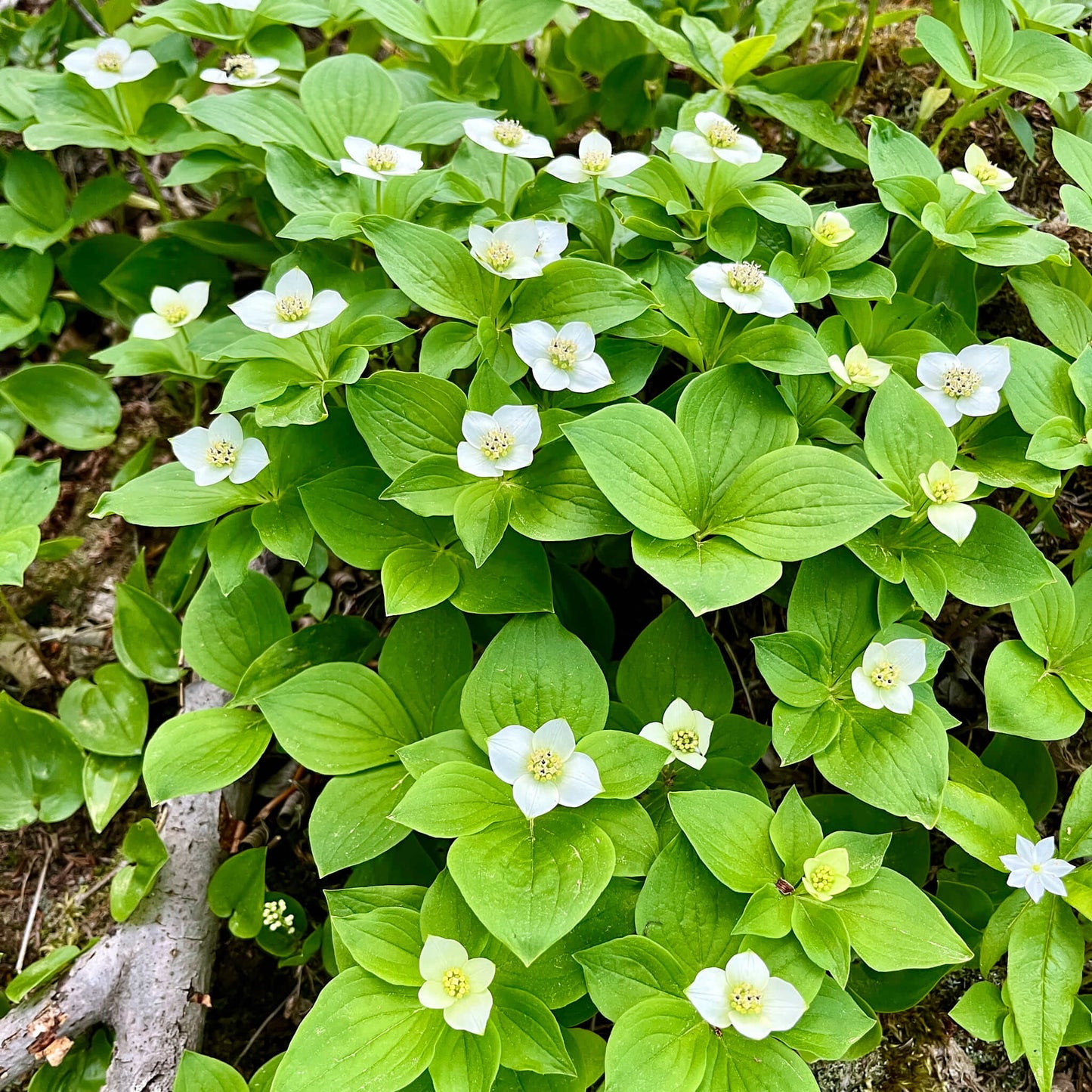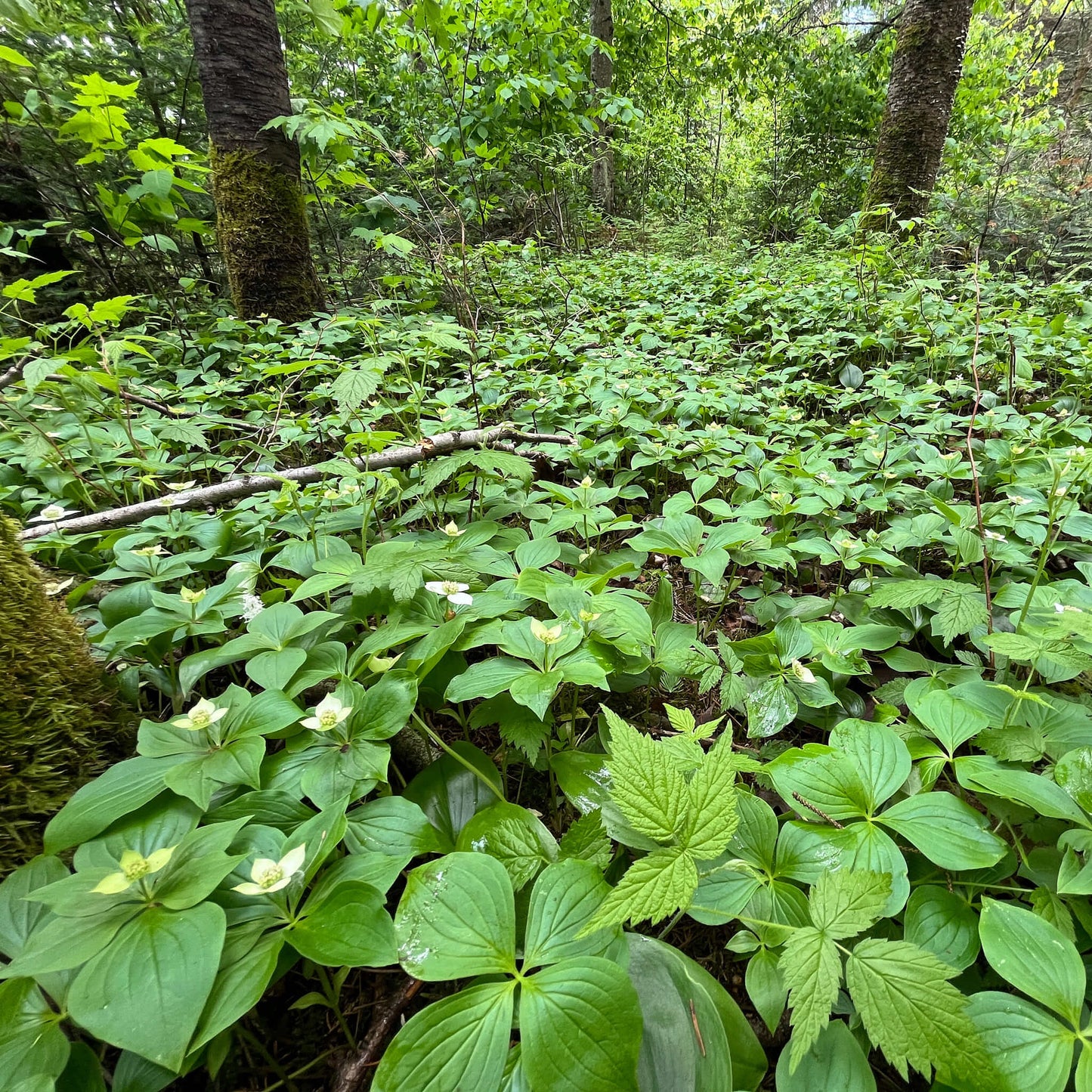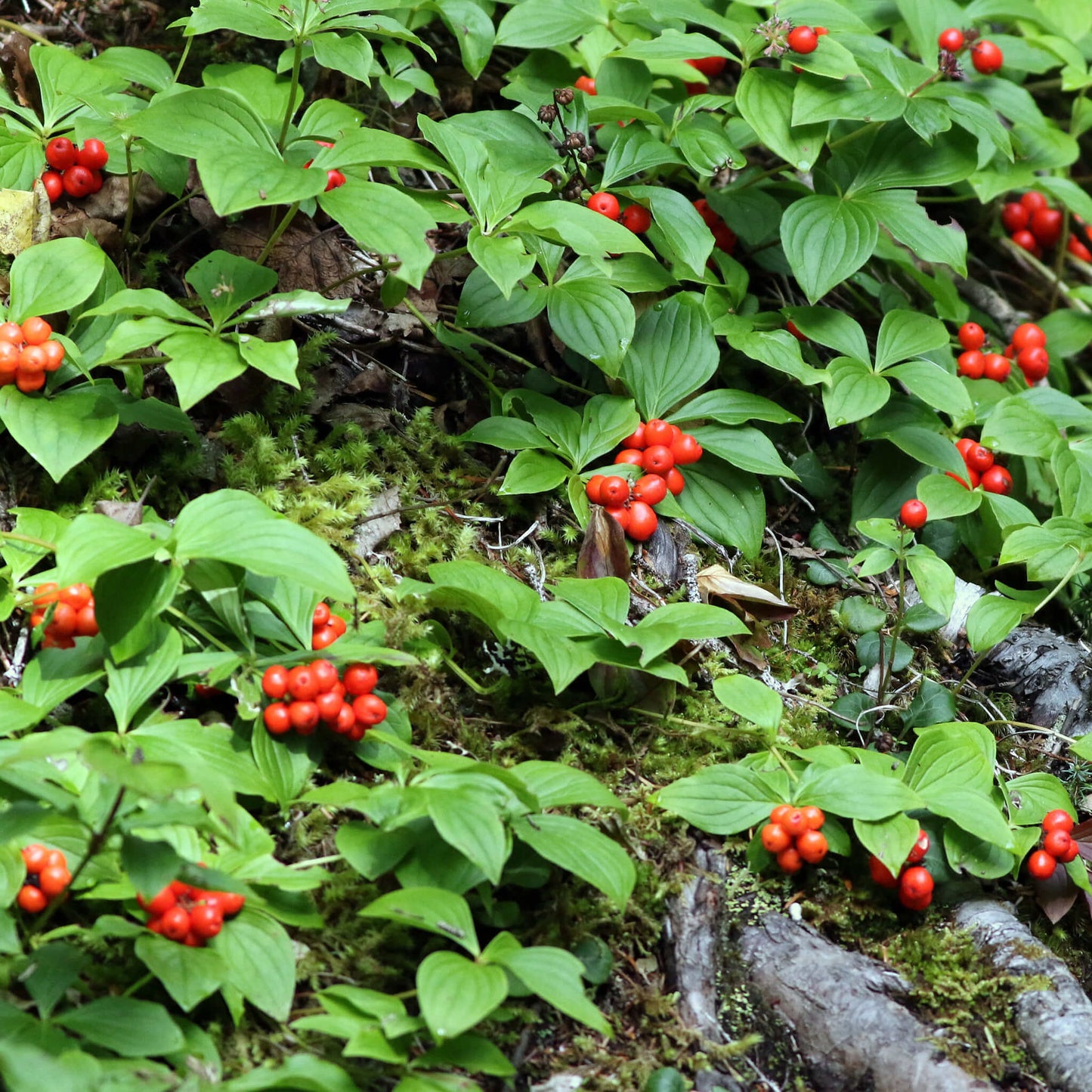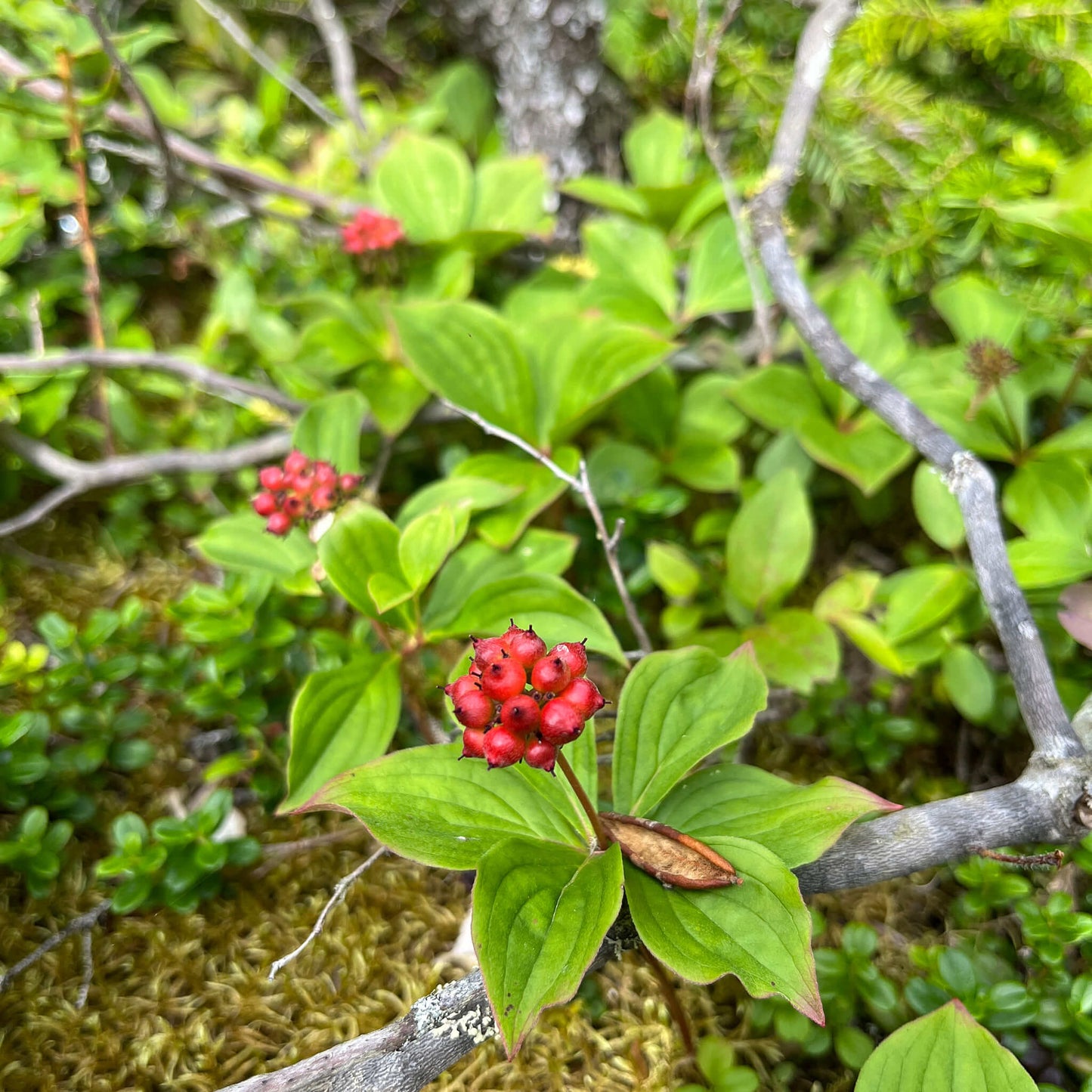This site is protected by hCaptcha and the hCaptcha Privacy Policy and Terms of Service apply.
For successful seedlings,
see the growing notes at the bottom of the page!
Bunchberry (Cornus canadensis) is a small creeping perennial plant that forms a dense mat in Quebec's forests undergrowth. It is characterized by its dark green, shiny leaves arranged in whorls of 4 to 6 around the stem. In spring, it produces small star-shaped white flowers, which are actually modified bracts surrounding tiny greenish flowers at its center. After flowering, bunchberry develops small bright red berries that persist throughout the summer and are sometimes consumed by birds. Growing to about 15 cm in height, this plant prefers acidic, humus-rich soils and cool, shaded spots typical of Quebec's boreal and temperate forests. Hardy and well adapted to cold climates, it easily survives Quebec's winters.
Medicinal and Culinary Uses
The leaves and stems are analgesic, cathartic, and febrifuge. The fruits are rich in pectin, which is a capillary tonic, anti-edematous, anti-inflammatory, antispasmodic, and hypotensive. Although edible, the fruits are not particularly flavourful and are generally consumed by wildlife rather than humans.
Ecological Role
Bunchberry plays an important role in forest understories by providing ground cover that helps stabilize soil and prevent erosion. Its red berries are a food source for many bird species and small mammals. Its flowers, although inconspicuous, attract pollinating insects, thereby contributing to the biodiversity of northern forests. In addition to its ecological role, bunchberry is valued for habitat restoration and landscaping in shade gardens.
Bunchberry seeds require cold stratification toensure germination. See the cultivation notes below for more details.
Akène cannot assume any responsibility for the use of plants for therapeutic purposes. Always seek advice from a professional before using a medicinal or edible plant.
Sowing and Growing
Technical Details
Seeds per packet: 75
Family: Cornaceae
Scientific name: Cornus canadensis
Life cycle: Perennial
Hardiness zone: 2
Soil type: Loamy
Soil moisture level: Dry to humid
Soil - additional attributes: Rich, tolerates acidic soils
Light: Sun, part shade, shade
Blooming: May to July
Spacing: 25 cm
Height: 15 cm
Deer resistance: Moderate
Stratification: 60 days
Scarification: No
Germination time: 15 to 30 days
Sowing depth: 5 mm

